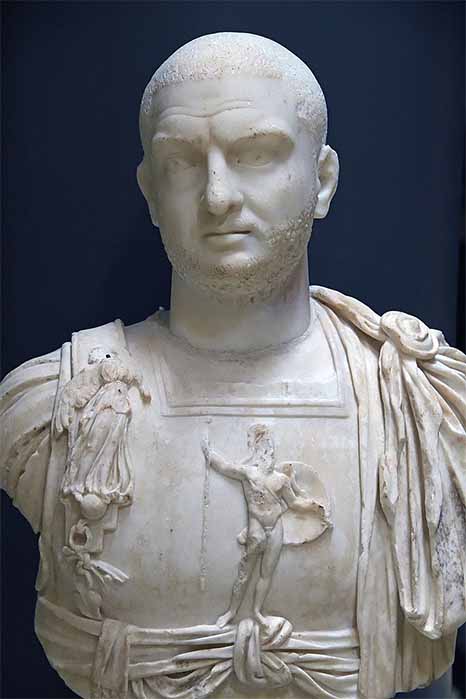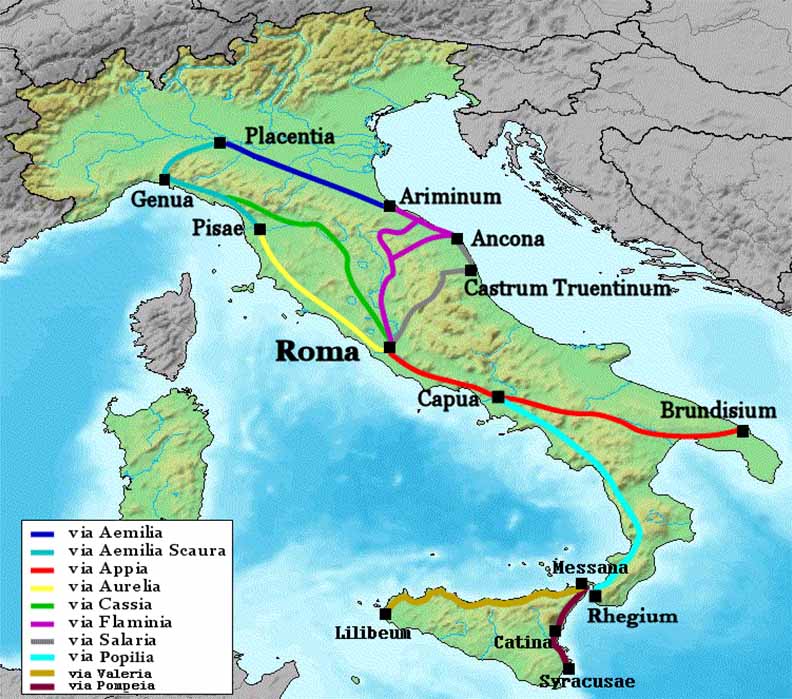
A Crumbling Roman Empire: Treachery, Mutiny And Plague 250 – 270 AD
The Roman Empire during the first half of the third century AD experienced a rapid succession of no less than eight Emperors, battling the Persians in the east and the invading Goths on the northern border. Each one of these eight came to a violent end, either succumbing in battle or at the hands of assassins, often dispatched by their own men. Treachery and mutiny were common among the fickle forces, out to back whomever candidate could secure them the most battle booty. Encouraged by the purple cloak being up for grabs by whomever had the strongest military backing, usurpers challenged the legitimate Emperors at every turn. To make matters worse, the Empire was plagued by the Cyprian plague. One by one the following Emperors battled and failed to save the crumbling Empire. Did the fate of the Roman Empire fare any better during the second half of the third century?

Bust of Emperor Trebonianus Gallus. Antakya. (third century AD) (Dosseman/CC BY-SA 4.0)
Trebonianus Gallus (251-253)
Senator Trebonianus Gallus was the governor of Moesia when he actively participated in the wars of Emperor Decius against the Germanic tribes on the Danube in 250. However, with his eye on the purple cloak, he betrayed Decius in battle and Decius and his army were massacred by the Goths in 251. This left the purple cloak vacant, and the remaining members of the Danube army’s high command, probably ignorant of the act of betrayal, proclaimed Trebonianus Emperor. Less energetic than his predecessor and in a hurry to return to Rome to be sanctioned for his new task by the Senate, Trebonianus obtained a humiliating peace from the Goths, who returned to their forests with booty and Roman prisoners in tow. Trebonianus’ betrayal did not seem to be generally known. Rather, the defeat was perceived as the result of Decius’s failed strategy. The purple cloak sanction was therefore done without difficulty.

Aureus of Trebonianus Gallus (AD 251-253) (Classical Numismatic Group/ CC BY-SA 2.5)
Once in Rome, Trebonianus adopted Decius’ second and surviving son, Hostilian, in order to further legitimize his authority. Hostilian died the following year, a victim of the Cyprian plague that was crippling the whole Empire. It was then that Trebonianus associated his own son Volusian to power. Trebonianus drew popular esteem when he took the necessary measures to ‘properly dispose of’ the victims of the plague, whether they were rich or poor.
Shortly after the new Emperor arrived in Rome, the Persians, having just defeated the army of the East, invaded Roman Mesopotamia and then Syria. At the same time, the Balkans were attacked from the North by the Germanic Carpi and the Burgundians. Trebonianus did not intervene and abandoned the ravaged provinces to fend for themselves.
- The Men Who Ruled The World From Rome
- The Devaluation of Rome: Roman Inflation and the Demise of the Empire
- How Ancient Rome Dealt with the Barbarians at the Gate
Aemilian, who had replaced Trebonianus as the governor of Moesia, temporarily repelled the Germanic invaders beyond the Danube and was in turn proclaimed Emperor by his own ardent troops. Disenchanted with Trebonianus’ inactivity and apparent powerlessness before the enemies of Rome, Aemilian decided to go to Rome in order to depose Trebonianus and replace him. Now urged to protect his throne and his life, Trebonianus requested the assistance of General Valerian, the commander of the Rhine legions, to fight Aemilian. However, Aemilian was the first to arrive in Italy. After gathering troops, Trebonianus decided to fight Aemilian himself in Terni. Facing the enthusiastic troops of Aemilian, Trebonianus’ smaller army of fortune refused to wage a suicidal battle for an Emperor who had lost all credibility. Trebonianus and his son Volusian were therefore killed by their own troops, who decided to join those of Aemilian as he entered Rome in triumph.





